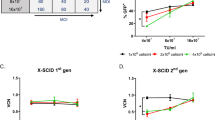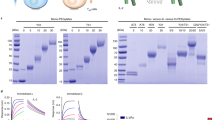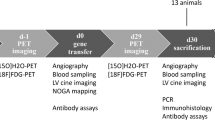Abstract
The gene encoding the immunosuppressive cytokine viral interleukin-10 (vIL-10) was introduced into BALB/c (H-2d) vascularized cardiac allografts by perfusing the graft vasculature with DNA–liposome complexes, utilizing the experimental cationic lipid γAP DLRIE/DOPE and a plasmid encoding vIL-10 under the control of the HCMVie promoter. The DNA to lipid ratio and DNA dose were critical factors in obtaining optimal biologic effects. Gene transfer of vIL-10 with a 3:1 DNA to lipid weight ratio using 375 μg DNA significantly prolonged allograft survival in MHC-mismatched C57BL/6 (H-2b) recipients (16.00 days) compared with both unmodified allografts (8.14 days) and vIL-10 antisense controls (8.28 days). Enhanced graft survival was specific to vIL-10 expression since treatment with antisense plasmid or anti-vIL-10 monoclonal antibody (mAb) abrogated the effect. Prolonged survival was associated with a novel histology characterized by a moderate mono- nuclear infiltrate, edema, and diffuse fibrillar/collagen deposition in the interstitium. Despite these morphologic changes, myocytes remained viable and vessels were patent. Limiting dilution analysis revealed transient infiltration of IL-2 secreting, donor-reactive, helper T lymphocytes (HTL) and cytotoxic T lymphocytes (CTL) in vIL-10 expressing grafts on day 7, that decreased significantly by day 14. Similarly, vIL-10 gene transfer inhibited the accumulation of donor-specific HTL and CTL in the spleen, compared with antisense controls. Prolonged survival was also associated with a marked decrease in IgM and IgG alloantibody production, with little to no IgG isotype switching. These results show that viral IL-10 gene transfer inhibits graft rejection in a clinically relevant model by inhibiting donor-specific cellular and humoral immune responses.
This is a preview of subscription content, access via your institution
Access options
Subscribe to this journal
Receive 12 print issues and online access
$259.00 per year
only $21.58 per issue
Buy this article
- Purchase on Springer Link
- Instant access to full article PDF
Prices may be subject to local taxes which are calculated during checkout
Similar content being viewed by others
Author information
Authors and Affiliations
Rights and permissions
About this article
Cite this article
DeBruyne, L., Li, K., Chan, S. et al. Lipid-mediated gene transfer of viral IL-10 prolongs vascularized cardiac allograft survival by inhibiting donor-specific cellular and humoral immune responses. Gene Ther 5, 1079–1087 (1998). https://doi.org/10.1038/sj.gt.3300694
Received:
Accepted:
Published:
Issue Date:
DOI: https://doi.org/10.1038/sj.gt.3300694
Keywords
This article is cited by
-
Plasma and bronchoalveolar lavage samples in acute lung allograft rejection: the potential role of cytokines as diagnostic markers
Respiratory Research (2017)
-
Epstein-Barr virus IL-10 gene expression by a recombinant murine gammaherpesvirus in vivo enhances acute pathogenicity but does not affect latency or reactivation
Herpesviridae (2014)
-
Effects of local and systemic viral interleukin-10 gene transfer on corneal allograft survival
Gene Therapy (2007)
-
Lentivirus-mediated gene transfer of viral interleukin-10 delays but does not prevent cardiac allograft rejection
Gene Therapy (2005)
-
Gene transfer of virally encoded chemokine antagonists vMIP-II and MC148 prolongs cardiac allograft survival and inhibits donor-specific immunity
Gene Therapy (2000)



